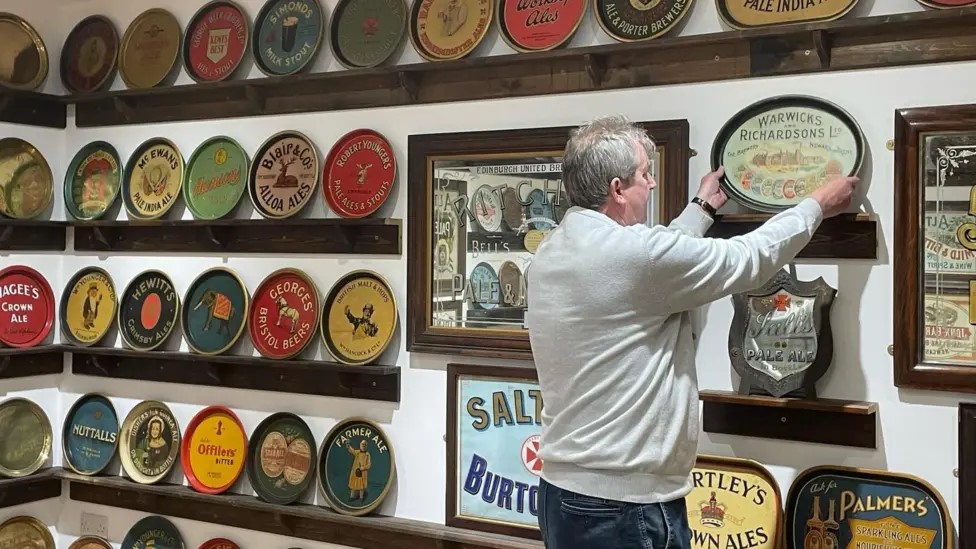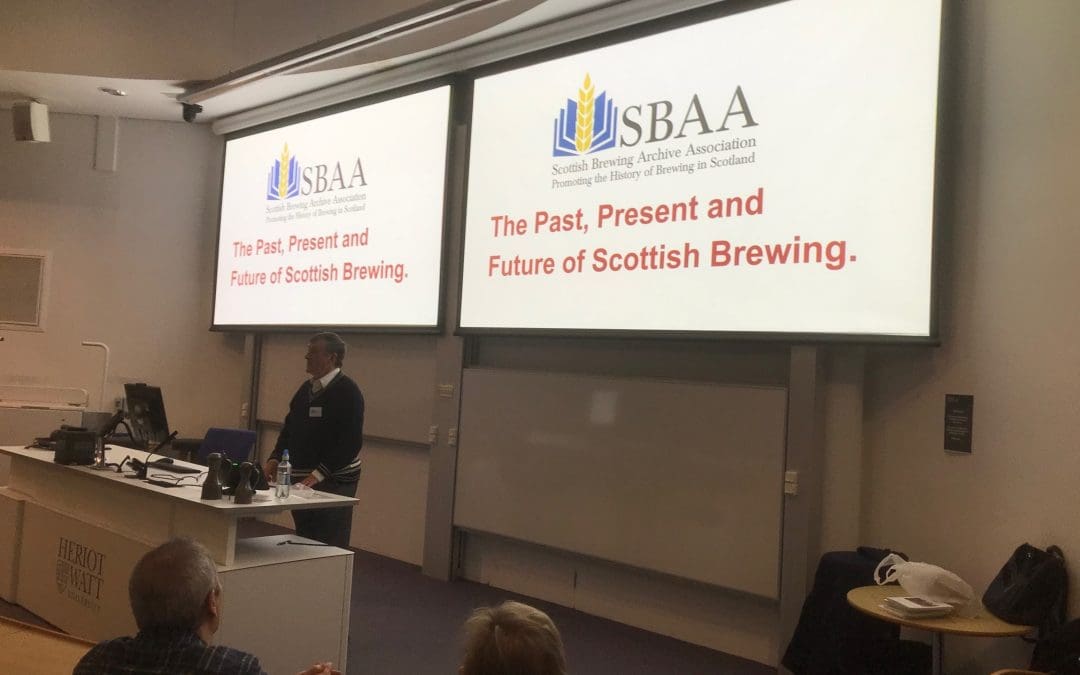1. Chairman’s Statement:
I would like to wish all our members a Happy New Year and to look forward to another successful year in researching and promoting the history of brewing in Scotland.
Last year the SBAA lost two stalwarts with the passing of Les Hutcheon and Richard Rees who both contributed greatly over the years. They will be missed.
I would like to welcome Graham Malkiewicz to our committee. Graham agreed to join the committee after the AGM. Graham worked for both S&N and C&C the Irish drinks company as a Logistics Manager.
With the addition of Graham this brings the committee back to full strength.
At the AGM there were a number of event ideas tabled and your committee will meet to decide on a course of action with the details included in the April Newsletter.
For those attending the AGM two different beers were handed out to those present. It would be good to receive feedback of these beers. Paul Mynard has written an article on our experience of brewing these beers at Stewart Brewing which you can read later in this Newsletter.
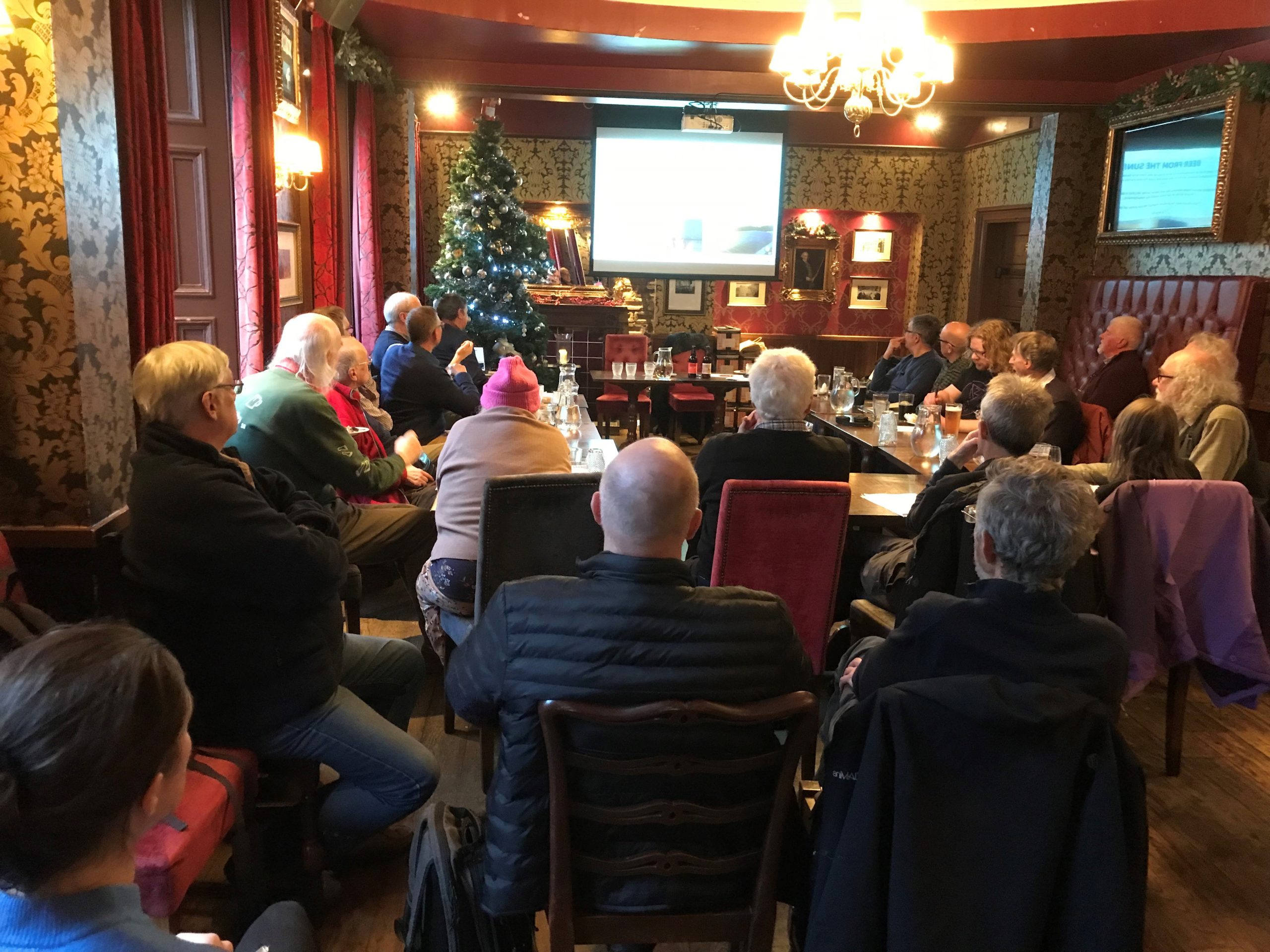
As we need to plan ahead it would be good to receive articles for this years Newsletters and Annual Journal.
Please get in touch if you have any suggestions or just ideas.
During the course of last year we were in discussions with Glasgow University Archives & Special Collections regarding the completion of the online cataloguing for all breweries in the collection. In order to complete this necessary work the SBAA has donated £4000 and in the memory of Les Hutcheon who was involved with the brewing archive for over 20 years in its early years at Glasgow University. Once this project has been completed, we will inform you of this with instructions on how to access the brewery collections online.
Thank you to everyone who have made valuable contributions either with articles, research or involvement.
2. Edinburgh’s last major brewery
In 2022 Heineken announced that it was closing Caledonian Brewery in Edinburgh. This sad news was covered in Newsletter No 52. Since that time the University of Glasgow’s Archives & Special Collections visited the brewery with the details of their visit included in Newsletter No 56.
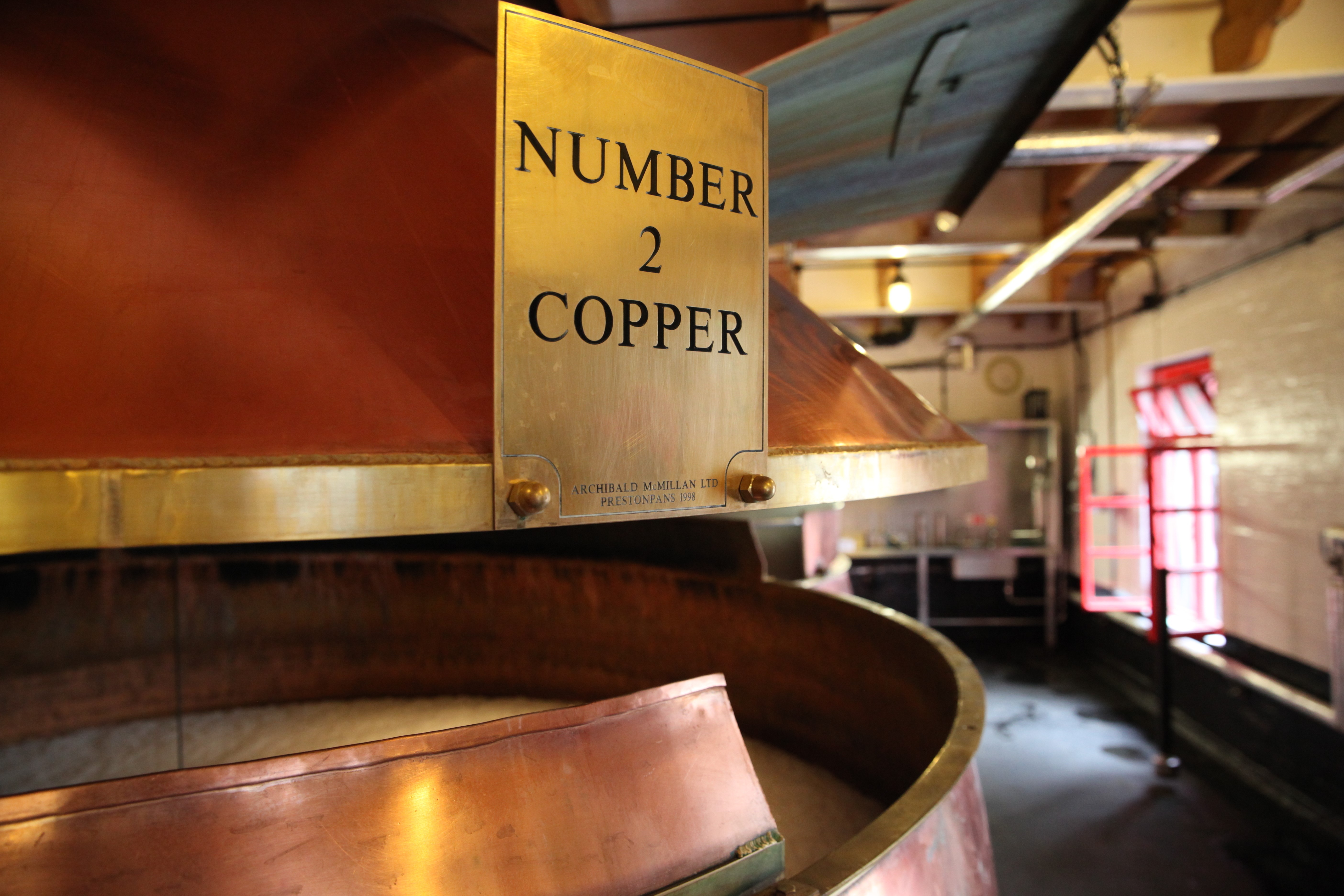
One of the three famous “direct fired” coppers , probably the last in the United Kingdom
The SBAA did contact Historic Environment Scotland last year who also visited the brewery to take photographs before it was closed. See the attached link to the Canmore web site and to view the photos.
The historic 1.9-acre brewery in Shandon on Slateford Road will be turned into new homes and, according to local reports, the developer has already submitted its Proposal of Application Notice with a public consultation scheduled to be held on 7th February.
Prior to Heineken closing the Caledonian Brewery in 2022, it was Edinburgh’s last major brewery and had been founded in 1869 by George Lorimer and Robert Clark. The brewery, along with its B-listed Victorian buildings, reportedly used traditional brewing methods and open square fermenters and direct-fired copper kettles.
An article on the Caledonian Brewery was included in last year’s Journal.
3.Four Men with a Plan, Three Men went to Brew.
Report on a Brewing Experience at Stewart’s Brewery.
As part of the events calendar for 2023, the committee decided it would visit Stewart’s brewery at Loanhead to make some beer in their brew kitchen. The team was John Martin, Graeme Fisher and the writer.
At an earlier meeting it had been agreed that we would brew some historical beers which no longer featured in the current ranges on offer. The decision was “Table Beer” and “Scotch Ale”. The table beer would be a lighter pale ale (4.5%) and the Scotch ale a more robust heavy beer (6.5%). The beer would be bottled by Stewart’s and distributed at the AGM. It was also decided to honour two members of the SBAA for their contributions down the years. Sir Geoff Palmer and Richard Rees, who sadly passed away in the summer. John Martin discovered that Sir Geoff preferred a lighter beer so the paler beer was named in his honour and Richard‘s was the Scotch ale. The quantity to be brewed would be two half baches of 40litres each.
The brew session began with lunch in Stewart’s excellent pizza diner and last minute discussions took place over the ‘phone with Fergus Clark, who unfortunately was unable to join us on the day. It was then off to meet our brewer Nathan Vickers and after the health and safety questionnaire was completed, we were into the brew kitchen.
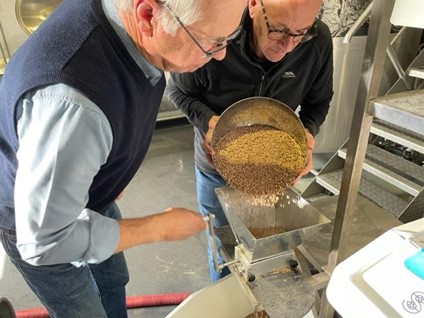
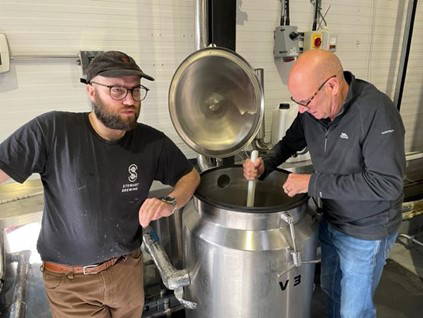
The hops were weighed out by the team and as soon as the boil started the bittering hops were added, followed later by the flavour and aroma additions. At the end of the boil the wort was cooled in a plate heat exchanger and then put into the fermentation vessels, where the yeast was added and then they were left to Stewart’s tender loving care to ferment, followed by bottling.
As part of the Stewart experience it is possible to prepare bespoke labels for the beers, Graeme Fisher undertook this task and his fine work is now there for all to see.
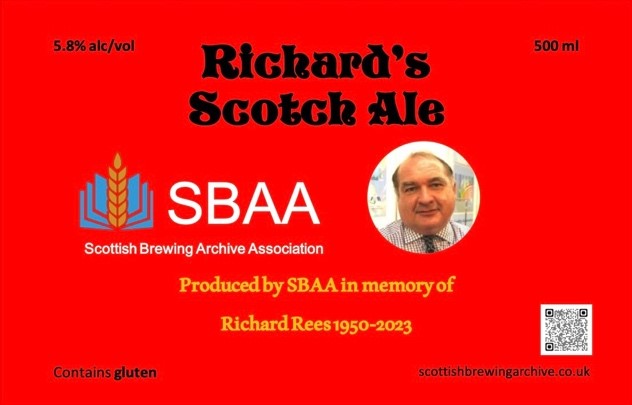
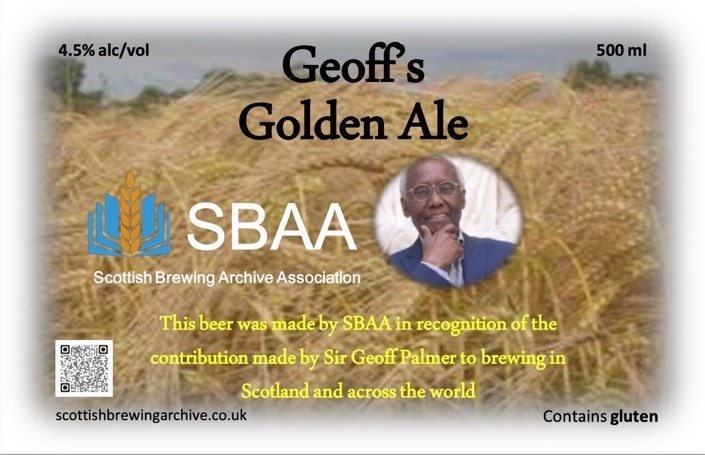
Paul Mynard
4. Mystery Tennent’s Can?
With the World Cup scheduled for 2024 this item has some relevance.
Fellow SBAA member Neil Lawrence was sent some pictures from a member of the “Beer Can & Brewery Collectibles Club of America” depicting a German footballer on a can of Tennent’s Lager.
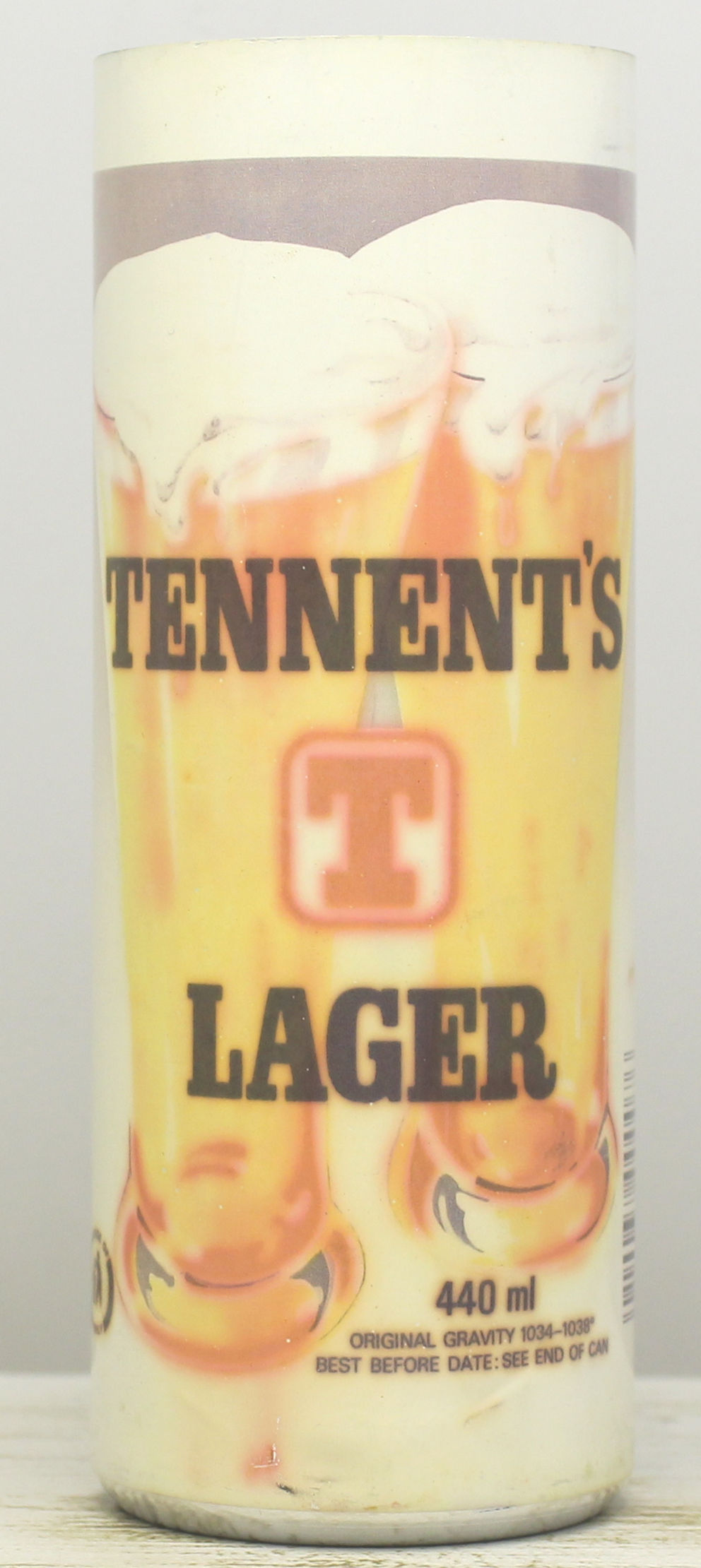
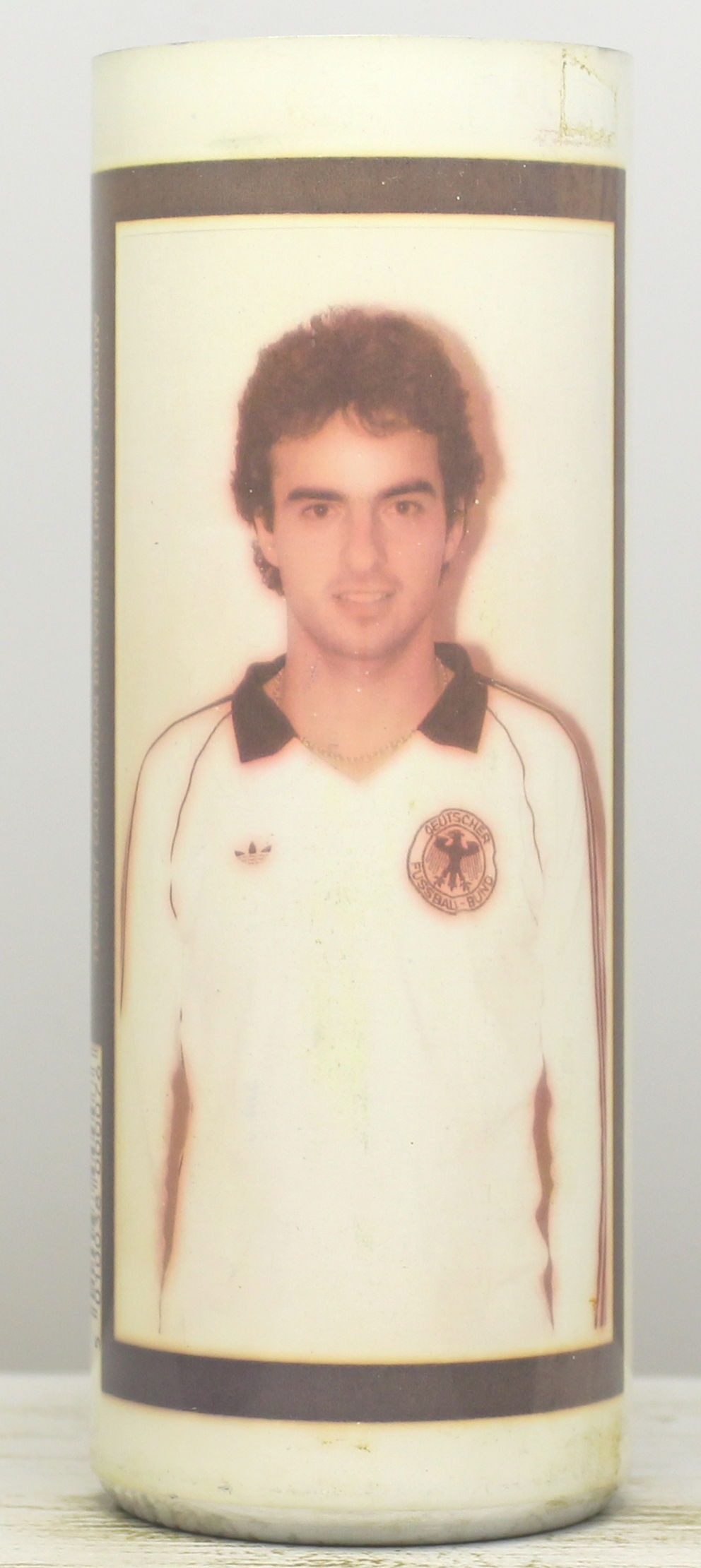
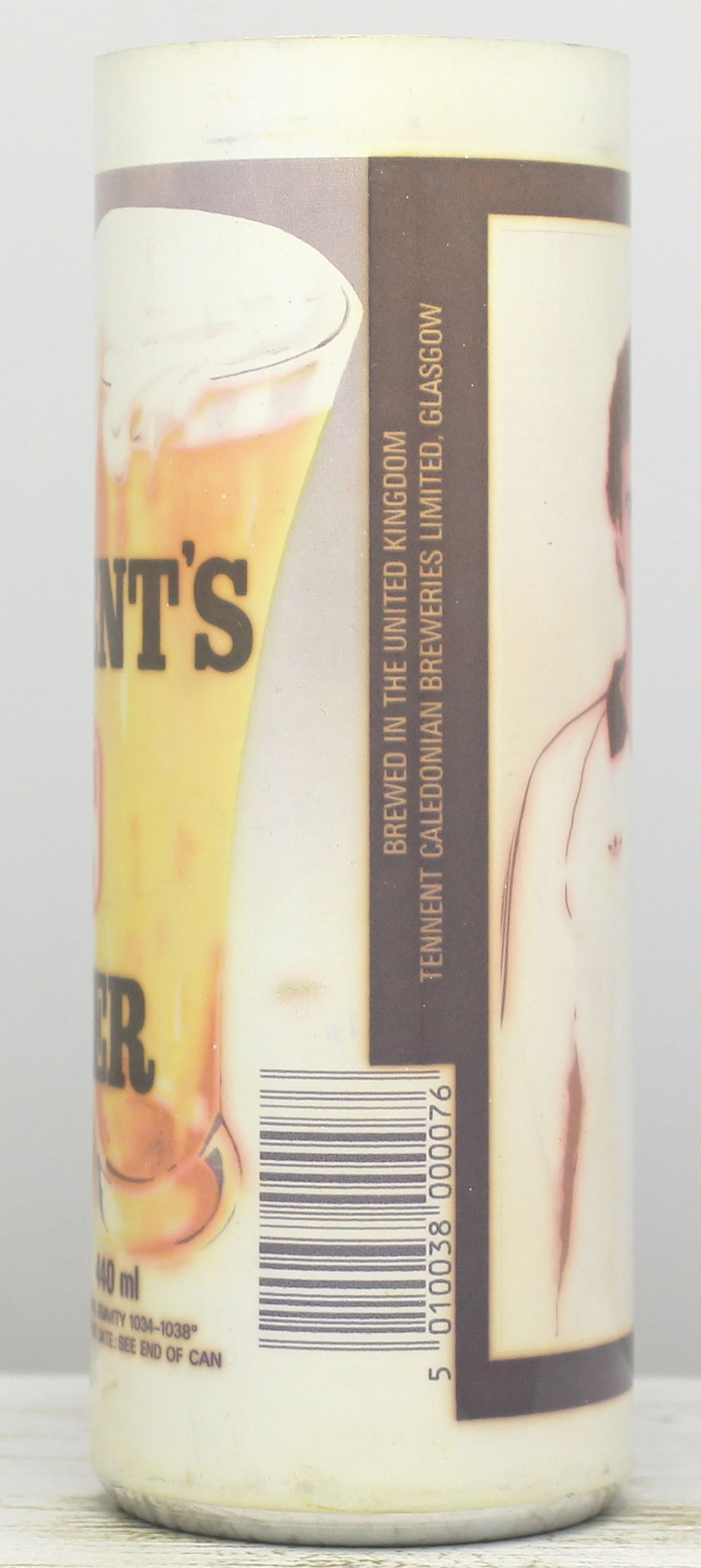
Those familiar with the history of Tennent’s cans will be aware that cans with photos on the back were a feature from the late 1950’s through to the mid 1990’s. Most famously the “Lager Lovelies” that are now part of Scottish culture and sought after by can collectors Worldwide.
Occasionally a one-off can would be produced with a photograph to commemorate a person or event , such as a retirement of an exceptional employee. However , no precedent exist that would explain the appearance of a German footballer on a Tennent’s can.
On close inspection of the photographs from American , the print work looks genuine and not an image stuck to the can. Further research confirmed that the footballer was Hansi Muller a member of the German 1982 World Cup Squad. Why he was on the can is a mystery ?
The photos were run past members of the Tennent’s Archive Trust Group (TATG) but they were equally puzzled as to its origin. The can itself can be dated to around 1982 , just around the time that CMB (Crown Metal Box) , the manufacturer of the can , were introducing an new high quality printing process for Tennent’s Lager cans called “REPROTHERM”. This was basically a photo transfer system that enabled very glossy graphics to be reproduced on a steel can. It was very successful. The best examples are the Tennent’s ‘Lager Lovely’ series of cans introduced in 1985 to celebrate the brands Centenary. Another clue in the photographs is that the neck of the can has no flange or top. This suggests that this can had been through the decorator at CMB but not finished off in the in the final manufacturing process. Therefore, the speculation is that CMB were looking for a white image that included skin tones when developing the “reprotherm” technology and in early 1982 an image of a German footballer would meet that criteria and this is a test can. Unless you know differently ??
5. Historic Edinburgh Pub
Following last years AGM a few diehards reconvened in the bar and during our discussions turned to the Boundary Bar in Leith. For more than a century it was famous as the pub where punters on one side of the bar could get an extra half hour drinking time just by shuffling over to the other side of the bar. The boundary line separating Leith and Edinburgh was down the middle of the pub with both having different licensing times.
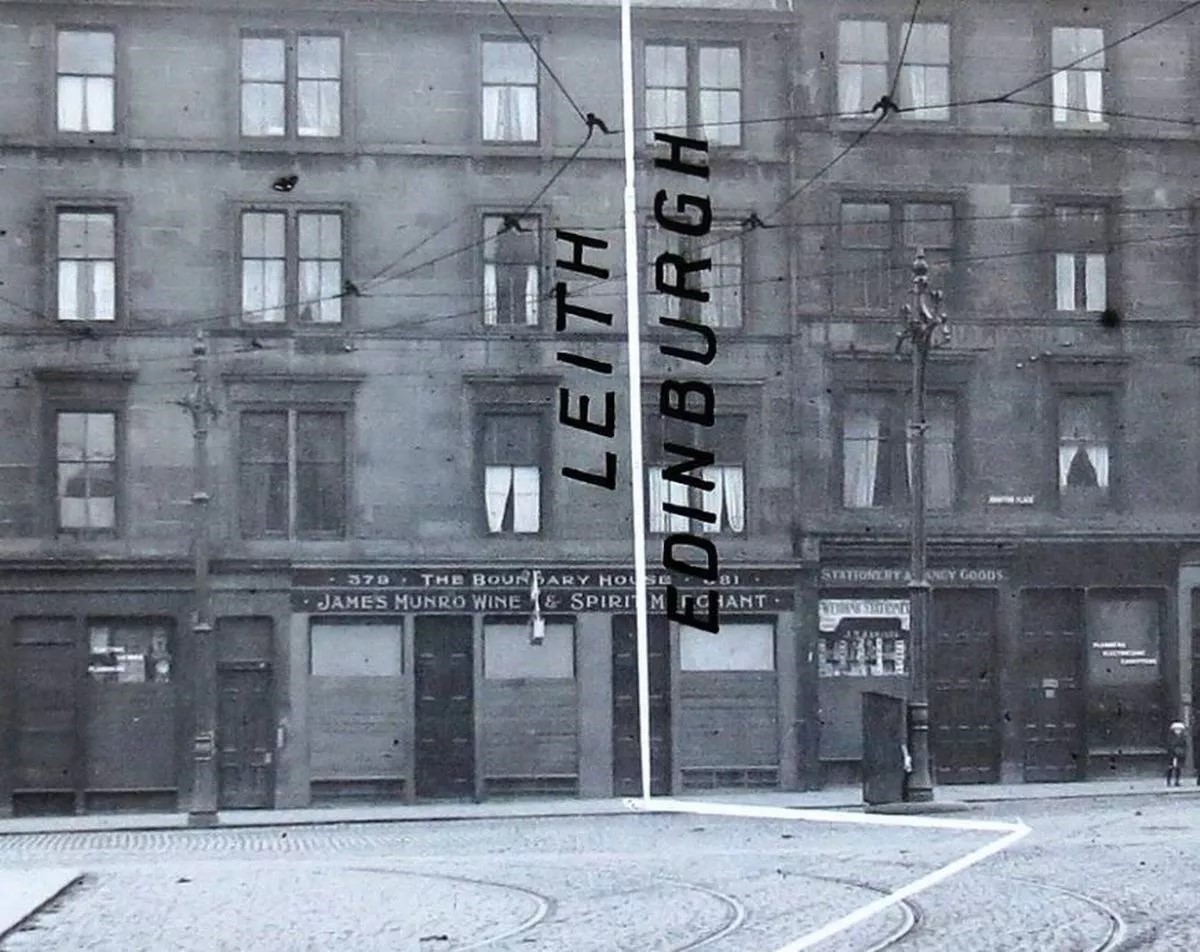
This famous watering hole closed in 2002 after it deteriorated badly in the 1990s and reopened as City Limits. Six years ago, the pub changed its name to the Bier Hoose but read recently that the pub is changing its name back to the Boundary Bar. When it reopens the plan is to retain its history with two barrels in the front bar, one marked ‘Leith’ and the other ‘Edinburgh’.
However today the licensing times are no longer different between Leith and Edinburgh. I just wondered if the extra hour drinking time in these days encouraged more customers to attend. Thanks to Jim Lawrie , an authority on Edinburgh pubs , for the photos below.
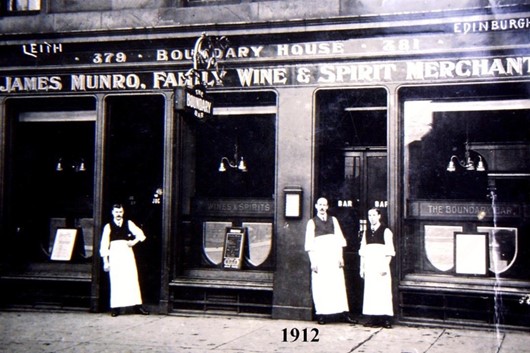
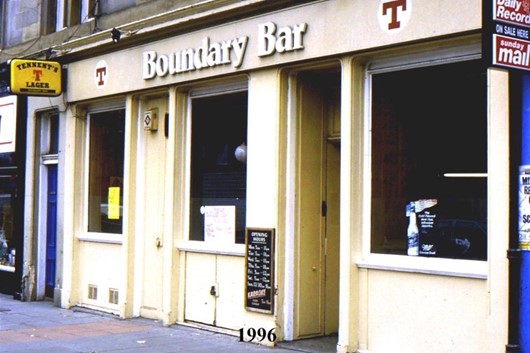
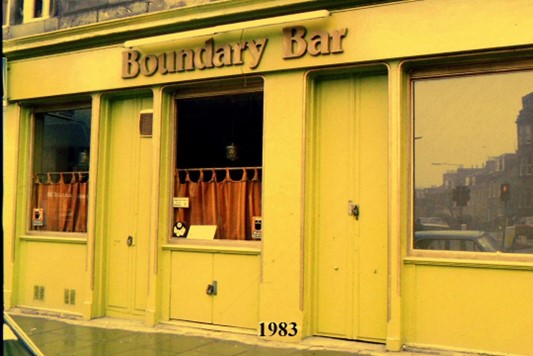
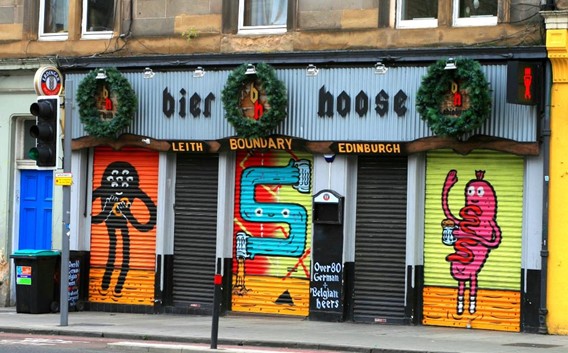
6. Glasgow University Archive
As mentioned in the Chairmans statement completion of the on line cataloguing is work in progress , but it doesn’t stop English based SBAA member Edd Mather from continuing his research. (see SBAA journal Volume 23 , 2023 for his recent work)
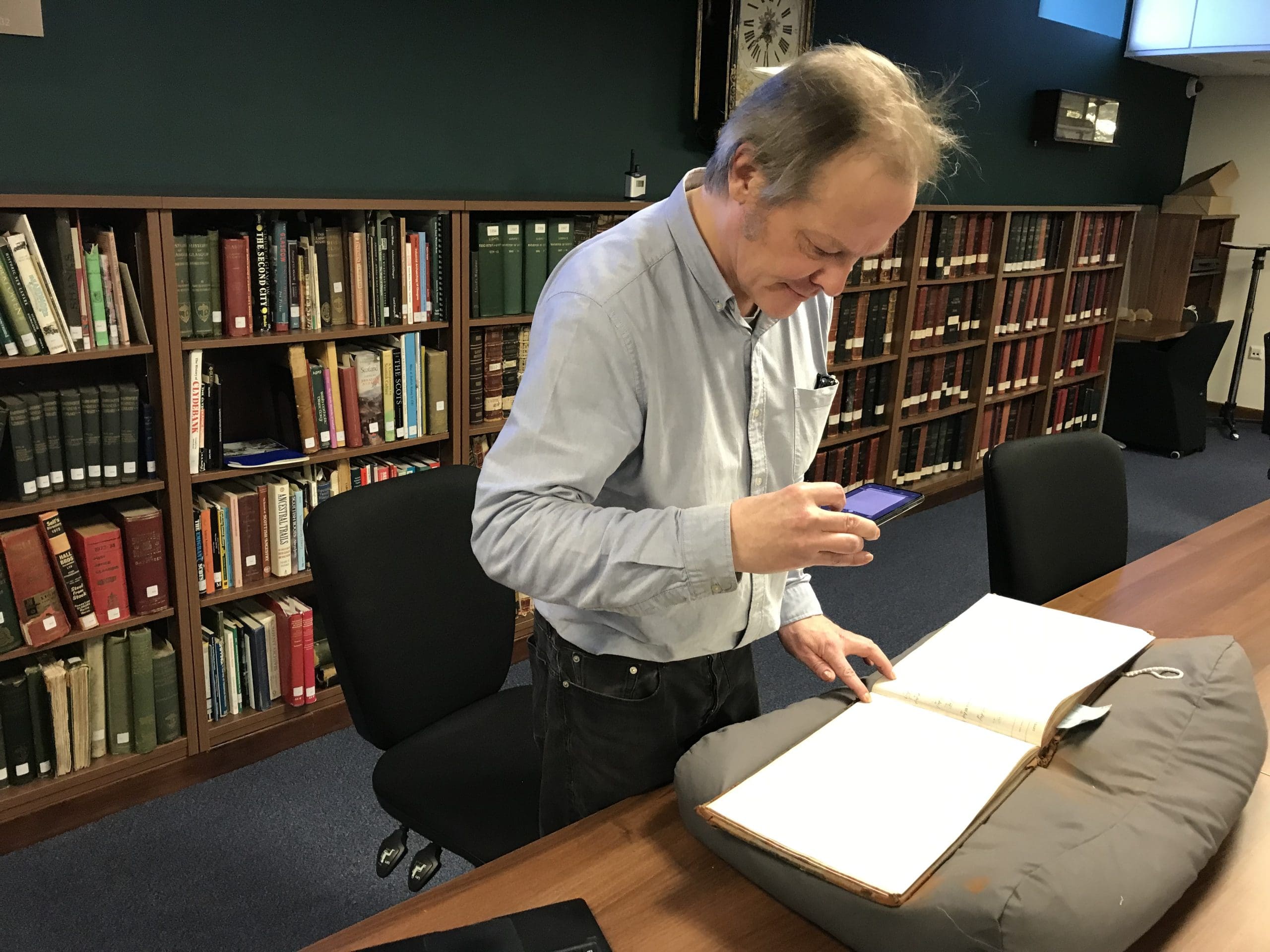
Here is Edd reviewing a 1900 Willian Youngers brewing book at the Glasgow University archive in December.
We hope to run a SBAA members event at the University Archive sometime in the future.
10. Last Runnings
![]() Apologies to Charles Johnston who attended at November AGM at the Beehive but was missed off the attendees list on the minutes – that’s a pint I owe you, Ivor.
Apologies to Charles Johnston who attended at November AGM at the Beehive but was missed off the attendees list on the minutes – that’s a pint I owe you, Ivor.
![]() Delighted to welcome Jenny Rees as a new member. However, Jenny is no stranger to the SBAA. Her husband was the late Richard Rees and Jenny was of great assistance to the committee during Covid 19 setting up several “zoom” meetings. Jenny met Richard at S&N where they both worked in the early seventies. We are really pleased that you are keeping the connection with the SBAA going.
Delighted to welcome Jenny Rees as a new member. However, Jenny is no stranger to the SBAA. Her husband was the late Richard Rees and Jenny was of great assistance to the committee during Covid 19 setting up several “zoom” meetings. Jenny met Richard at S&N where they both worked in the early seventies. We are really pleased that you are keeping the connection with the SBAA going.
![]() Remember and send in any articles or interesting photos, next newsletter April.
Remember and send in any articles or interesting photos, next newsletter April.
Correspondence to the SBAA Secretary secretary@scottishbrewingarchive.co.uk
